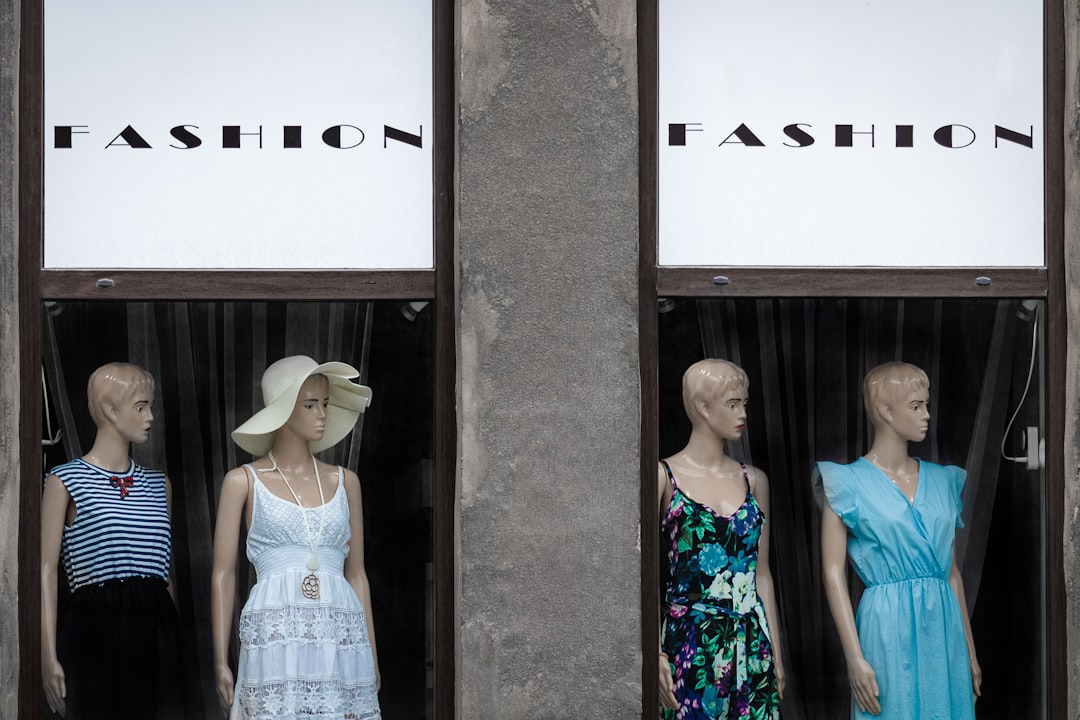Have you ever paused to consider the journey your clothes take before they reach your closet? In an era dominated by fast fashion, it’s easy to overlook the environmental and social costs behind those trendy, inexpensive pieces. But what if there was a better way? What if your fashion choices could actively contribute to a healthier planet and fairer labor practices? Good news! The sustainable fashion movement is gaining incredible momentum, offering stylish and ethical alternatives. Let’s explore the brands and practices leading this vital shift! 😊
Why Sustainable Fashion is More Crucial Than Ever 🤔
The fashion industry, while glamorous, has a significant dark side. It’s one of the world’s largest polluters, contributing to massive textile waste, water pollution, and substantial carbon emissions. From resource-intensive raw material production to energy-hungry manufacturing and transportation, the environmental footprint is staggering.
Beyond the environment, the human cost is equally concerning. Many fast fashion brands rely on exploitative labor practices, with garment workers often facing low wages, unsafe conditions, and long hours. Sustainable fashion, on the other hand, champions fair wages, safe working environments, and respect for human rights across the entire supply chain. It’s about creating a system where people and the planet thrive, not suffer.

The global sustainable fashion market is projected to reach over $150 billion by 2028, growing at a compound annual growth rate (CAGR) of approximately 12%. This growth is fueled by increasing consumer awareness and demand for ethical products.
Decoding Sustainable Practices: What to Look For 📊
Navigating the world of sustainable fashion can feel overwhelming with all the terminology. Here’s a breakdown of key areas to consider when evaluating a brand’s sustainability claims:
Key Pillars of Sustainable Fashion
| Category | Description | Examples/Certifications |
|---|---|---|
| Materials | Prioritizing renewable, recycled, or low-impact fibers. | Organic Cotton, Recycled Polyester (rPET), Tencel, Hemp, Linen |
| Production | Minimizing waste, water, and energy use; avoiding harmful chemicals. | Low-impact dyes, closed-loop systems, renewable energy |
| Ethics & Labor | Ensuring fair wages, safe conditions, and no child labor. | Fair Trade Certified, SA8000, transparent supply chains |
| Circularity | Designing for longevity, repair, reuse, and recycling. | Take-back programs, repair services, upcycling initiatives |
Some brands use vague terms like “eco-friendly” or “conscious” without concrete evidence. Always look for specific certifications, transparent reporting, and detailed information about their practices. If it sounds too good to be true, it often is!
Key Checkpoints: What to Remember! 📌
Made it this far? Great! With so much information, it’s easy to forget the essentials. Here are three key takeaways to keep in mind:
-
✅
Prioritize Transparency and Certifications
Always look for brands that are open about their supply chains and hold reputable third-party certifications like GOTS, Fair Trade, or B Corp. -
✅
Focus on Sustainable Materials
Opt for natural, organic, recycled, or innovative low-impact fabrics to minimize environmental harm. -
✅
Embrace the Circular Economy
Beyond buying new, consider second-hand, rental, repair, and upcycling to extend the life of garments and reduce waste.
Top Sustainable Fashion Brands Leading the Charge 👩💼👨💻
Ready to update your wardrobe with purpose? Here’s a list of brands that are consistently recognized for their commitment to sustainability and ethical practices. While this list isn’t exhaustive, it provides a great starting point for your conscious shopping journey. Always check their latest reports and certifications for the most up-to-date information.
- Patagonia: A pioneer in outdoor apparel, known for its commitment to environmental activism, durable products, and repair programs. They use recycled materials and advocate for fair labor.
- Eileen Fisher: Focuses on timeless designs, organic and recycled materials, and a robust take-back program that recycles and resells old garments. They are a leader in circular fashion.
- Reformation: Offers stylish clothing made from sustainable materials like Tencel, recycled fabrics, and organic cotton. They provide detailed impact reports for each product, showing water, waste, and carbon savings.
- Tentree: As the name suggests, they plant ten trees for every item purchased. Their clothing is made from eco-friendly materials such as organic cotton, recycled polyester, and hemp.
- Pact: Specializes in organic cotton basics for the whole family. All their products are GOTS certified organic and Fair Trade certified, ensuring ethical production from farm to factory.
- Girlfriend Collective: Known for its activewear made from recycled plastic bottles (rPET) and fishing nets. They emphasize ethical manufacturing and size inclusivity.
Before making a purchase, visit the brand’s “About Us” or “Sustainability” section on their website. Look for specific details about their materials, manufacturing processes, labor standards, and certifications.
Beyond Buying New: Embracing a Circular Fashion Future 📚
Sustainable fashion isn’t just about buying from ethical brands; it’s also about changing our consumption habits. The concept of a circular fashion economy aims to keep resources in use for as long as possible, extracting the maximum value from them whilst in use, then recovering and regenerating products and materials at the end of each service life. This means embracing practices like:
- Second-hand & Vintage: Platforms like ThredUp, Poshmark, and local consignment stores offer a vast array of pre-loved clothing, extending their lifespan.
- Rental Services: For special occasions or to try new styles, services like Rent the Runway allow you to rent garments instead of buying them.
- Repair & Upcycling: Learning basic mending skills or utilizing repair services can significantly extend the life of your clothes. Upcycling transforms old items into new ones.
- Mindful Consumption: Simply buying less, choosing quality over quantity, and caring for your clothes properly are fundamental to sustainable fashion.
Case Study: Sarah’s Sustainable Wardrobe Journey
- Situation: Sarah, a 30-year-old professional, used to buy 5-7 new fast fashion items monthly, leading to a cluttered closet and guilt over waste.
- Goal: Transition to a more sustainable wardrobe without sacrificing style.
Her Approach
1) Declutter & Donate: She first purged her closet, donating usable items and properly recycling unusable textiles.
2) Research & Invest: Sarah researched sustainable brands (like those mentioned above) and started investing in fewer, higher-quality pieces made from organic cotton and recycled materials.
3) Embrace Second-Hand: She now regularly checks online consignment shops for unique pieces and rents formal wear for events.
4) Repair & Care: She learned basic mending and takes her favorite items to a local tailor for repairs, extending their life significantly.
Final Result
– Reduced Purchases: Buys 1-2 new items every 2-3 months, down from 5-7 monthly.
– Higher Quality: Her wardrobe now consists of durable, ethically made pieces she loves and wears often.
Sarah’s journey shows that a sustainable wardrobe is achievable and rewarding. It’s not about perfection, but about making conscious, incremental changes that collectively make a huge difference.
Wrapping Up: Your Sustainable Fashion Journey 📝
The shift towards sustainable fashion is more than just a trend; it’s a necessary evolution for the industry and for our planet. By choosing brands committed to ethical production and eco-friendly materials, and by embracing circular practices, we can all contribute to a more responsible and beautiful future for fashion.
Remember, every conscious choice you make, no matter how small, adds up. Start exploring these incredible brands and transform your closet into a force for good. Got questions or favorite sustainable brands we missed? Let us know in the comments below! 😊
